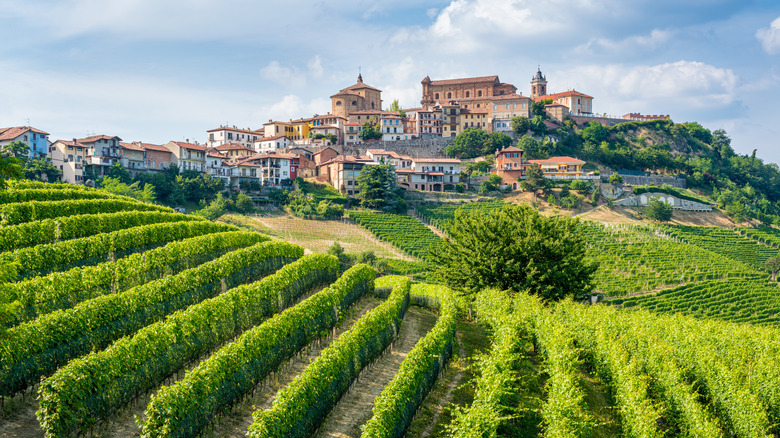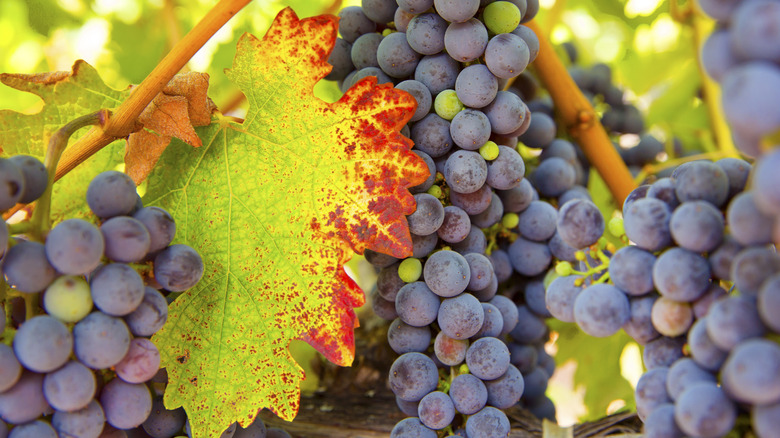The Country That Produces The Most Wine Isn't Actually France
In France, wine is much more than a mere drink to be enjoyed with dinner; it's part of the national identity. The country is arguably the world's most famous wine producer, so it's easy to assume that it produces more of the drink than anyone else. However, this honor goes to France's eternal wine frenemy, Italy. According to the International Organization of Vine and Wine (or OVI, an acronym derived from its French name), Italy produced 44.1 million hectoliters of wine in 2024. Considering that you need three pounds of grapes to make a standard 750 milliliter bottle, this is a staggering amount. The number is also impressive because Italy doesn't have the world's largest vineyard territory — that honor goes to Spain. It's worth pointing out that many of Italy's wines come from French grape varietals, as is the case with pinot grigio, which is originally from Burgundy but enjoys high popularity in northern Italy.
Though Italy comes in first place, France doesn't lag too much behind; grabbing second place with 36.1 million hectoliters. This amount is commendable, but it's still 17.9% lower than the country's five-year average, causing some concern within the wine world. Globally, 2024 production was 225.8 million hectoliters, the lowest output in more than six decades.
Other major wine producing countries
Given the size of its vineyard territory, it's no surprise that Spain takes third spot on the list of top wine producing countries with an output of 31.0 million hectoliters. The United States' 21.1 million hectoliters earn it fourth place. Neither of these countries are safe from the issues affecting Italy and France, as they have also seen their output suffer in recent years. A few countries have seen their production rise, but they're mostly secondary players in the international market. These include Russia, Hungary, Greece, and Georgia (one of the world's oldest wine producing regions). Output for these countries is relatively insignificant compared to that of top producers, not even reaching 12 million hectoliters all combined.
A primary concern for the wine industry is an increasingly erratic and unpredictable climate which has caused extreme weather events like droughts and floods. Climate change is already coming for chocolate, coffee, and rice. Wine could be its next victim. Another factor affecting the industry is people's changing habits. As studies have shown, any amount of alcohol is detrimental to our health. Younger people are moderating their consumption or shunning alcohol altogether. Though the future of viniculture is uncertain, we hope this product (which has been an important part of human life for thousands of years) will adapt and survive. After all, neither Italy nor France would be the same without wine.

